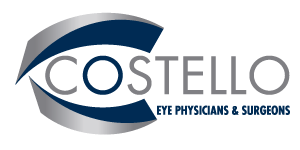There has been a rapid evolution in cataract treatment over the past few years, which translates to added patient benefits, including improved visual outcomes and faster recoveries. Phaecoemulsification is a quick outpatient procedure that corrects vision with little discomfort and rapid return to normal activities. It requires a tiny incision and breaks up the cataract with ultrasound waves. Next, a soft, flexible synthetic intraocular lens (IOL) is inserted into the lens capsule of the eye. There is also a multifocal lens option to provide distant, near and intermediate vision. In most cases, the incision is so small that the eye heals rapidly with little or no discomfort. Drops are used after cataract surgery, and the patient is asked to refrain from swimming or water activity for two weeks.
Cataracts are an opacity or clouding of the normally crystalline lens of the eye, caused by the natural aging process, metabolic changes, injury, various forms of radiation, toxic chemicals and certain drugs. The leading cause of vision loss among adults age 60 or older, cataracts impair vision, making everyday activities increasingly difficult.
In simple terms, a cataract is usually part of the normal aging process that changes the natural, clear lens of the eye into a cloudy, opaque structure that inhibits or diminishes the passage of light to the retina. The condition can be compared to a window that is frosted or “fogged” with steam.
Symptoms:
Patients with cataracts often experience the following symptoms:
- Blurring of vision.
- Glare, or sensitivity to light.
- Double vision in one eye.
- Frequent changes in eyeglass prescription.
- Difficulty in reading in low light.
- Declining night vision.
- Fading or yellowing of colors.
Detection:
Adults over the age of 40 should schedule routine eye examinations on an annual basis to determine whether cataracts or other eye disorders are present. A thorough examination by an ophthalmologist or qualified eye care professional usually includes:
- A visual acuity test to measure clarity at various distances.
- Pupil dilation to examine the lens and retina for other eye problems.
- Tonometry, a standard procedure to measure fluid pressure inside the eye.
Safe Surgery; Speedy Recovery:
Not long ago, cataract surgery required a hospital stay and was usually postponed as long as possible. Today, cataract surgery is performed on an out-patient basis and takes only a few minutes. Patients are free to return home to rest in comfort and avoid the inconvenience and expense of a hospital stay. In most cases, daily activities such as driving and reading can be resumed almost immediately.
During the surgery, the cloudy lens is removed from the eye. In most cases, the focusing power of the natural lens is restored by replacing it with a permanent intraocular lens implant.
Cataract surgery is considered one of the most popular and highly successful procedures, with improved vision occurring in over 90 percent of cases. In fact, a study by the American Society of Cataract and Refractive Surgery recently reported that more than 98 percent of cataract patients had their vision successfully improved following surgery. Many patients report vision that is even better than before they developed cataracts. Results are permanent; once removed, cataracts will not reoccur.





